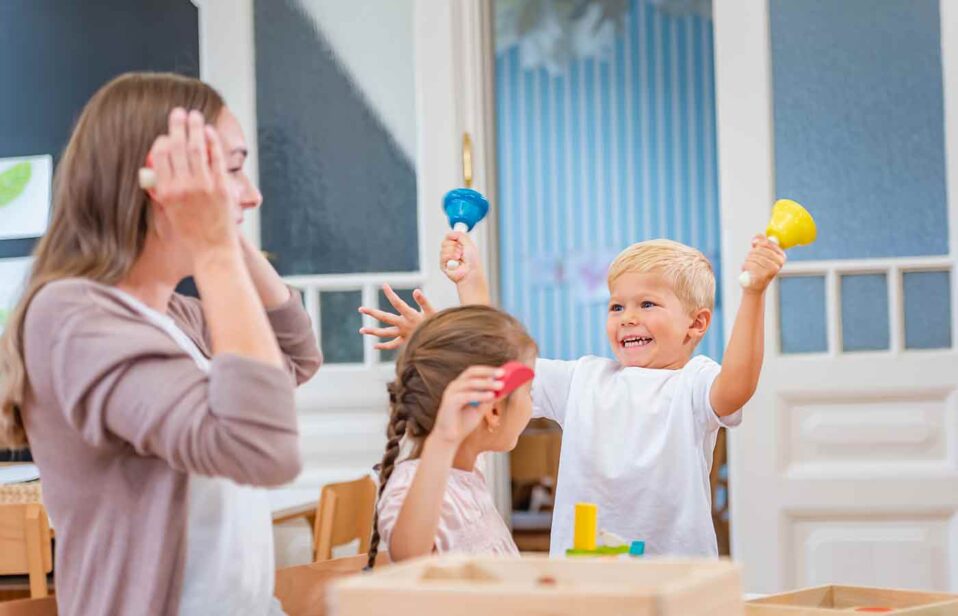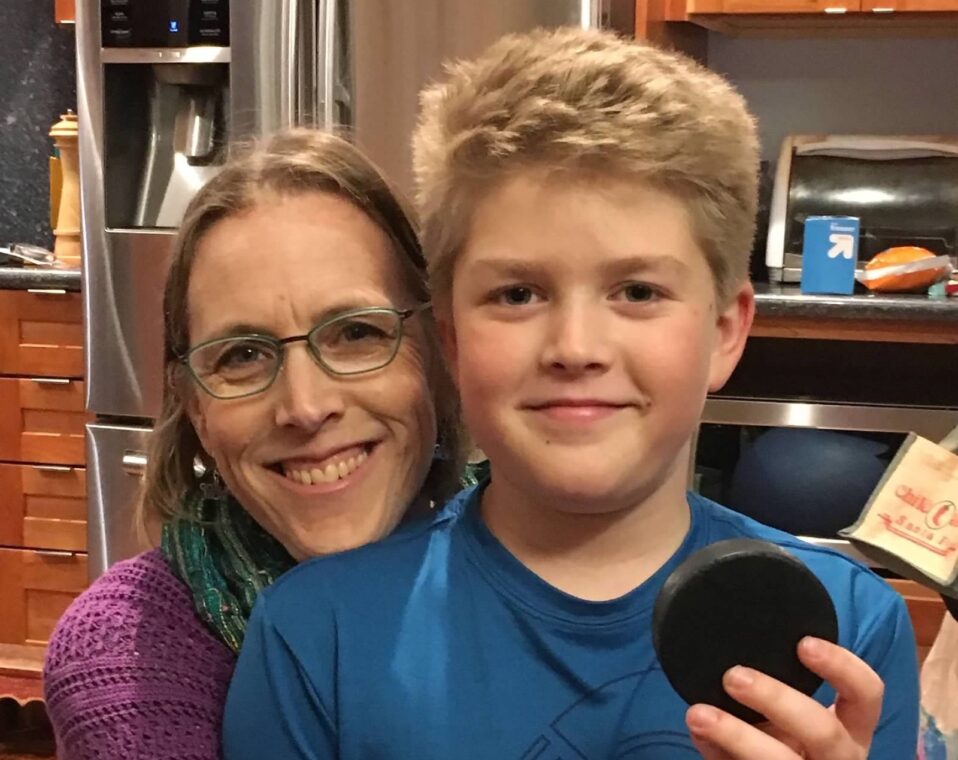By Teachers at the OFJCC Leslie Family Preschool: Jahaira Alaniz, Mark Alsup, Marissa Catura, Brianda Delgadillo, Kristen Green, Niv Kohen, Elan Loeb, Lital Raz, Meral Unlu, Kader Uygur, Tamaya Walker, & Cinthya Zavala; with support from Mykenzie Busser, Dr. David Neufeld, and Jenni Mangel.
Reading time: 3 minutes.
Teacher leaders and school administrators at the OFJCC Leslie Family Preschool are engaged in a year-long professional development experience designed to enhance a Culture of Inclusion. As part of this customized training experience through Jewish LearningWorks, the group meets monthly for content seminars and teachers meet individually with mentors between group sessions sessions.
At the meeting this month we had the teachers, in small groups, generate a list of strategies of what to do when your classroom starts to feel wild. We’ve all been there before — someone throws something, children are running, or a classroom discussion falls flat. We asked them to think of ideas, big and small. We wanted them to get as creative as possible. When they shared their ideas and we compiled the list, we thought it was too good a resource to keep to ourselves!
As we enter these indoor months of winter, we hope you’ll try out one or more of these strategies of what to do when your room needs a change!
Music
- Sing songs!
- Play calm jazz/classical music
- Play music music/movement games: “We are the Dinosaurs!”; dance with scarves and fabrics; animal actions.
Movement – High energy
- Go for a walk – the teacher, one child, or the whole class
- Take child/ren outside to kick and throw balls — do something physical
Let them play in the gaga pit (not gaga) - Take them on a campus tour… take them places they don’t usually go
Run up/down a ramp
Movement – Low energy
- Yoga and stretching
- Breathing ball — with the teacher holding the ball, expand the ball for three breaths in, and close the ball for three breaths out.
- Breathing Buddies — lay on your back with a puppet on your belly so you can see your buddy rise and fall with your breath
Get Quiet
- Deep breaths for teacher and for child
- Read stories
- Take an unplanned water or snack break. Have teachers and children sit at the table together for a few minutes as a chance to reset.
- Give children a chance to sit on the sofa/pillow/quiet area.
If they scream at you, respond in a whisper. Use whispering with parents and encourage them to keep calm in the classroom at drop off/pick up.
Connection
- If/when appropriate: kiss, hug, squeeze… and sometimes tickle.
- Respond to a child’s needs: be willing to make compromises with them, for example: allow them to sit on a chair with their toy from home during circle time rather than bringing it to the carpet where it would be distracting or leaving it in the cubby.
The Element of Surprise
- Use attention getters: Catch a bubble!; One-Two-Three, Eyes on Me!; Turn on your listening ears!
- Ring a bell, change the activity — it’s time to clean up
- Whisper.
- Call “Freeze!”
- Use a flashlight to capture their attention.
Games & Activities
- Scavenger hunt — Give them something to focus on: I’m looking for something blue… something shiny… something round…
- Start a new sensory activity like slime or a baking project.
- Pass a ball/bean bag between people.
- Play Simon Says or Total Physical Response activity
Change the focus/dynamic
- Refer back to the classroom’s Visual Schedule about the expected activity.
Break into small groups, and small groups of kids they don’t usually spend time with. - Give a child a job with positive reinforcement: “I know you’re good at [activity] can you help me with [special task].”Give child/ren a choice to do a different activity (redirection). Make a disruptive activity into a fun group activity: all scream at once then stop; Running turns into a chase game.
- Edit the environment > respond to sensory needs
- Turn off/on the lights — darkness makes it calm
- Adjust the thermostat to make the room warmer or cooler
- Use puppets as a focus. Let the puppets hypnotize them: “Oh, do you see the hippo? It’s hiding behind this bookshelf. It’s so loud in here it’s hurting hippo’s ears. I think if we’re quiet, hippo will come back out to play with us.”
Check Yourself
- Create a regular 5 min meditation before you come to school. Help yourself relax before you start your day.
- Participate alongside the children during clean up time; let them see you as part of their classroom community.
- Adjust our own voices — remove the commanding/loud tones
- Shift away from “Don’t” and “Not” to use positive commands. “Use walking feet.” “Let’s tip toe like mice.” “Put the toys away gently.”
- Change our own attention/intention, be willing to be flexible.
Interested in a Customized Training for Your Team?
Jewish LearningWorks leverages decades of experience training Jewish professionals across Jewish educational settings, and combines it with our well-built community relationships to craft the highest caliber single or multi-session training programs you need, when you need them, in-person or online.






